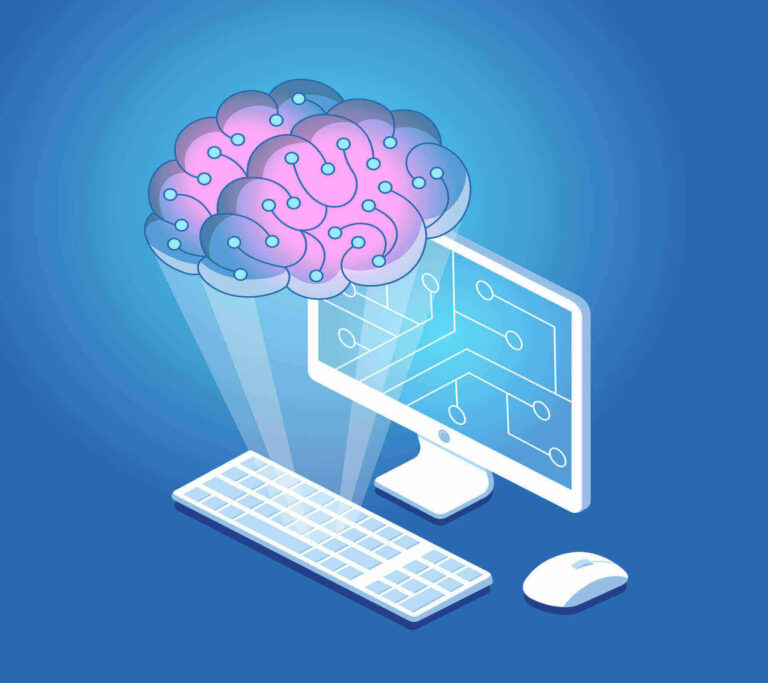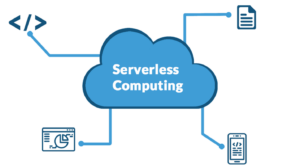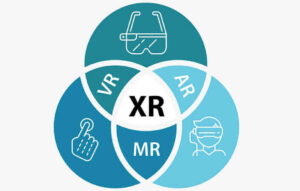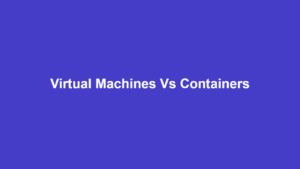Integrated AI Computing: Developing a Smarter Future

The integration of artificial intelligence into computing systems is driving a revolution that is disrupting all types of industries and creating even new markets.
Any software application can boost its capabilities with integrated AI. From automating business processes to discovering business insights and fraudulent transactions, the benefits are enormous.
Artificial intelligence models and their services are also available to everyone. So, this post looks at what AI integration can mean for your business or computer application, and how you too can develop a smarter future.
Computing Without AI
A traditional computer makes it easy to conduct calculations at a much faster rate than any human could do on his own, and this is what gives it its power. A 1-MHz computer can conduct about 1 million arithmetic operations per second, with some needing more than one cycle to complete. A 1-GHz computer can conduct 1 billion operations per second and those with multi-CPUs will multiply this capability according to their number of cores.
Solving problems in this way requires an understanding of the issues at hand and the development of software to work through the solutions. There had to be a subroutine to manage every possible scenario, and default routines for unexpected ones.
This approach to software development is okay and often efficient at getting the job done. But it limits the scope of what the developer can and cannot do. For instance, while you could use it to quickly identify the about 16.8-million differences in hexadecimal background colors ranging from Black (0x000000) to White (0xFFFFFF), and with relatively little resources consumed, you will be hard-pressed to apply the same methodology in distinguishing the faces of just ten or a hundred people.
In other words, this traditional approach to problem-solving on the computer works well when one or a few factors are involved. But once you have to programmatically consider hundreds or thousands of different factors in a split second, then a new model and development approach becomes necessary. And that’s exactly what artificial intelligence offers.
The AI Promise
Integrated AI computing combines the raw processing power of the traditional computer with the intelligent cognitive abilities of AI algorithms. This new, smarter system enables computers to analyze vast amounts of data with more ease and speed than a human could ever dream of doing, manually or programmatically.
AI models make it easy to compare as many factors as necessary through large amounts of data. It makes it easy to efficiently identify and classify patterns in the data, which leads to more informed decisions with human-like intelligence.
By leaving the bulk of the identification and classification of data work to AI, the developer can focus on the larger picture, speed up development time, and achieve much better results than would otherwise have been possible without the help of AI.
Applications Across Industries
You can integrate AI into computing systems to manage work in nearly every industry. Here are some of the popular markets and uses.
- Finance: From general market data analysis to fraud detection, portfolio management, and algorithmic trading, AI support in the financial markets continues to grow.
- Healthcare: AI is also being applied in the analysis of scans, such as MRI and X-rays for anomaly and disease detection. Furthermore, researchers can equally leverage AI models to speed up new drug discoveries.
- Robotics: From manufacturing to self-driving cars, personal care, and web robots, AI is revolutionizing the robotic industry with more and more complex tasks becoming easier to accomplish. AI is improving computer vision, localization and mapping, planning and control, object detection, and the ability to improvise in uncertain situations.
- Retail: The applications of AI technology in the retail space vary widely from providing personalized product recommendations to demographic analysis, customer service, inventory management, demand forecasting, pricing optimization, and fraud detection.
- Security: The ability of AI models to quickly analyze large amounts of data makes them ideal components in fraud and security-breach detection systems.
- Agriculture: Precision farming and agri-tech are increasingly relying on artificial intelligence to reduce the cost of growing food while boosting yields and profit.
Challenges of Integrated AI Computing
While integrated AI computing offers many promises, it also comes with its challenges, just like most other technologies. Here are the major ones.
- Model Availability: Obviously, there must be an already existing AI model that does the work you need. Otherwise, you will have to create one or modify an existing model to meet your needs.
- Algorithm Bias: There will always be the issue of algorithm bias, and this is often the case when you are using a model trained by someone else. Training data can corrupt an AI’s mind – so to speak.
- Data Quality: Garbage in and garbage out, also holds with AI operations. If you feed your system with low-quality data, then don’t expect a miracle. It’s always up to you to clean and prepare all data going into a model.
- Hardware Costs: Unless you are using an AI service through an API, for instance, you will need an adequate hardware installation to run a competent model. Even online services will still charge a fee.
Embedded Vs Cloud Vs Edge AI
One important issue to consider in your choice of AI model is delivery. You can either embed the model in your software code, have it running in the cloud, or on the edge. Each of these approaches has its pros and cons, so here’s a closer look at them.
- Embedded AI: Embedding the AI in your software code means that everything that you need to run the model will be physically available on the same computer that runs your software. This approach has its merits, such as high-security applications or systems that need to function independently offline. On the downside, large models might require lots of memory and processing power, including GPUs, to run.
- Cloud Hosted AI: Hosting your AI model on the cloud is another nice option. Most AI services are cloud-hosted, anyway, so, it’s up to you to choose. The benefits include lower costs and scalability, while the downsides might include latency and security concerns.
- Edge Hosted AI: For time-sensitive applications, you may want to additionally make your cloud-hosted model available on the edge. Cloud edges are data centers that offer services nearer to users’ locations to reduce latency. The availability of edge locations depends on the cloud provider, so you may need to shop around.
Initial Considerations For AI Integration
Before you go ahead with integrating artificial intelligence into your software, you will need to make some initial considerations to help you design a higher-quality product that you and others will appreciate using. Here are some of these major considerations.
- User Interface: Utility and ease of use are two factors that determine the value of most products. And for software, this is often settled by its user interface. Will the user access the AI through text, chat, voice, or visual means? Are the AI requests processed automatically or does the user have to do everything manually?
- Model Types: There are a hundred and one AI models out there and each has its strengths and weaknesses. Some are designed for images, while others are designed to write. What are you building and which model best satisfies that need? Is such a model already available or do you need to develop a new one?
- Optimization: There are lots of open-source AI models that you can take and fine-tune to function exactly the way you desire. How much optimization and fine-tuning will you need?
- Security & Data Privacy: Will you be dealing with sensitive information or are the application’s security needs minimal? How about user information and their safe storage?
- Scalability: Will your application need to scale and can the AI model scale with it?
How To Integrate AI in Software
There are a few steps involved in integrating AI models or their features into software applications and the following is a general overview of this process.
- Identify Use Cases: AI can’t do everything for you. You need to have specifically defined processes, tasks, or subroutines where the application of machine intelligence would be of great help. You need to first identify these and decide on how to accomplish them using AI.
- Select AI Technique: Next, you will need to select an AI technique or model that best suits the job at hand. It could be a neural network, search and rank approach, Bayes classifier, named entity recognition, a large language model, or a generative adversarial network that can best solve your problem.
- Select Model: Once you’ve settled on a technique, your next step is to find a model that uses such a technique that you can either integrate directly or fine-tune easily to produce the results you need. Here’s a nice LLM list to start you off. Keep in mind that not finding an appropriate model means you may have to build one from scratch.
- Data Collection & Preparation: You will need data to either fine-tune a base model or to build one from scratch. So, data collection and preparation are also important.
- Software Integration: This step could involve using API commands to query a cloud-hosted AI model or directly embedding the entire model into your application. The choice is yours.
- The User Interface: A tool’s value depends a lot on its ease of use. This cannot be overstated. You want your application’s AI features to be as easy to use as possible. A powerful application that is overly complicated to use is of little value. So, keep the UI simple and the program intuitive.
- Testing & Validation: Test the program after development and make sure that everything is working as it should.
- Deploy: Once you are satisfied with your work, switch to production mode and release the app. You will still need to monitor performance and look out for areas to improve.
- Iterate & Improve: Review your application’s performance, user feedback, and new market realities regularly to see what you might need to improve on. Then get it done and update the app.
Resources
- Google Colaboratory: Cloud service for development provided by Google.
- Tensorflow: Open-source machine learning framework.
- Azure: Microsoft’s cloud platform with free offers.
- Kaggle: Machine learning and data science platform with plenty of tools.
- Tflearn: A library for advanced deep learning projects.
- IBM Watson Studio: Cloud platform from IBM.
- LLM List: A curated list of large language models.
Frequently Asked Questions
Here are frequently asked questions about integrated AI computing and development.
Q: How can you integrate AI into computers?
A: You can integrate AI by either embedding the model or accessing a model in the cloud through an API.
Q: What are the benefits of integrated AI computing?
A: Integrated AI computing can improve the overall productivity of a business by increasing efficiency, accuracy, and fast decisions.
Q: Is integrated AI computing only for large organizations?
A: No, integrated AI computing is not reserved for large organizations only because the availability of open-source AI tools and affordable cloud services have leveled the playing field.
Q: What skills are required to integrate AI into software?
A: You will need skills in software development, machine learning, and data analysis.
Conclusion
Integrated AI computing will continue to disrupt industries and change our lives, as humanity stands on the brink of a smarter, more productive, and inter-connected future.
So, if you have had any doubts about integrating artificial intelligence into your business process or software before, then you should have made up your mind by now. Because things are evolving fast.





